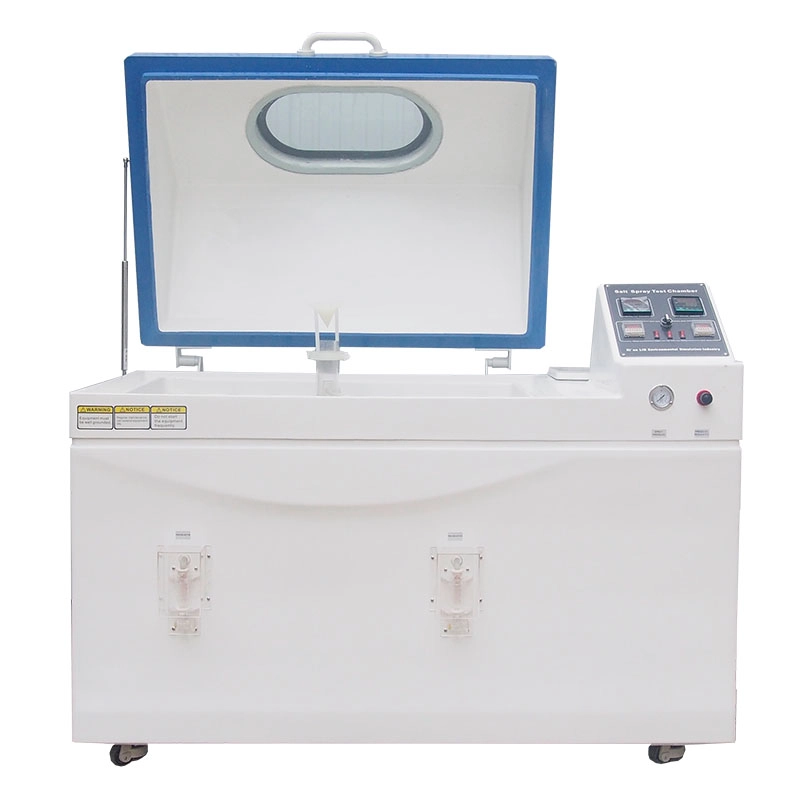Salt spray test chambers are super important for checking how tough stuff is against rust. They help big industries like cars, planes, and gadgets make sure their products last. Find out how they work, what they’re used for, and why picking the right chamber is a big deal for keeping things top-notch!
Salt spray test chambers are really cool machines that test how well materials and coatings fight rust. They make a salty mist to act like tough places, like near the ocean or in factories. These chambers check how strong paints, coatings, and metal platings are in salty conditions. They’re a must for seeing how long products can hold up without getting rusty.
Salt spray test chambers have some key parts that make them work great:
Spray Nozzle: Sprays a fine salty mist all over evenly.
Test Chamber: The box where you put stuff to test.
Saline Solution Reservoir: Holds the salty water for testing.
Heating System: Keeps the inside at the right temperature.
Controller Unit: Lets you set stuff like temperature, wetness, and how long the test runs.
Here’s how it goes. You get your test stuff ready and put it in the chamber. A salty mix, usually 5% salt in water, gets turned into a fine mist by the nozzle. The mist lands on the stuff in a warm, wet box. This speeds up rusting, so you learn how tough the material is in just hours or days.
The salty water is a big deal. It acts like seawater or factory pollution. This makes it perfect for testing coatings, metals, and other stuff that faces those conditions. You can tweak things like the water’s acidity or strength to match real-world spots.
Rust can mess up how strong or useful stuff is. Salt spray test chambers spot weak points in materials or coatings before they’re used. This makes sure products are good quality and work well for a long time.
Lots of industries need salt spray testing. Cars, planes, gadgets, boats, and building stuff all use it. These fields need materials that stay strong in tough spots without falling apart.
Cars and planes deal with wet roads, salty air, or crazy weather. Parts like panels, bolts, or engines get hit hard. Salt spray test chambers make sure these bits stay tough and look good for years.
Gadgets often sit in damp or beachy places where rust loves to grow. Salt spray test chambers check if coatings on circuit boards or connectors can keep rust away. This keeps your tech working great.
Boats, anchors, or offshore rigs face salty water all the time. Outdoor furniture or building stuff deals with rough weather too. Salt spray tests make sure these things can handle rust and last a long time.
LIB makes awesome gear for testing. Their salt spray test chambers meet ASTM B117, ISO9227, IEC60068-2-52, and other global rules. They come in sizes from 108L to 1600L to fit all kinds of testing needs.
Picking the right salt spray test chamber means thinking about size. You need a chamber big enough for all your test stuff at once. Salt spray test chambers come in sizes from 108L to 1600L. Small ones work for little tests, but big ones are great for factory-sized jobs.
You gotta make sure the chamber follows global rules like ASTM B117, ISO9227, and IEC60068-2-52. These set how the salty water, temperature, and wetness should be. Following these rules means your tests match what others do worldwide.
Easy upkeep and simple controls make a chamber way better. Look for ones with controllers you can set up easily. Auto systems cut down on handwork during tests. Also, check if you can get help or spare parts quick to keep the chamber running smooth.

Started in 2009 by Yang Menglin, LIB is a big name in making test gear. They’ve got over ten years of know-how building salt spray test chambers for all sorts of industries. They sell to 42 countries and work with big names like Intel, IBM, and Intertek.
Picking LIB stuff comes with tons of perks:
Lots of Sizes: LIB’s salt spray test chambersrange from 108L to 1600L, so they fit any job.
Global Rules: All models follow ASTM B117, ISO9227, IEC60068-2-52 standards.
Cool Features: LIB’s SC series has easy controllers and internet access for smooth use.
Worldwide Help: They’ve got seven top distributors around the world and are planning a support center in Malaysia.
Custom Options: They make chambers just for your needs.
Salt spray test chambers are a huge deal for checking how stuff holds up against rust. Think about size, global rules, and easy controls when picking one. With tons of experience and awesome products, LIB is a trusty pick for test gear all over the world.
Q1: What materials can be tested in a salt spray chamber?
You can test all kinds of stuff! Metals, painted or plated coatings, plastics, ceramics, and mixed materials get checked for rust in salt spray test chambers.
Q2: How long does a typical salt spray test take?
It depends on what you’re testing and what the industry wants. Tests usually run from a day to a few weeks to get solid results.
Q3: Are there international standards for salt spray testing?
Yup! Rules like ASTM B117, ISO9227, and IEC60068-2-52 say how to do tests right with the right salty mix, heat, and wetness.

